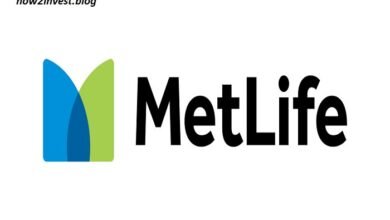Aristotle Investing Guide: How to Apply Ancient Wisdom to Modern Markets

Aristotle was one of the greatest philosophers and thinkers of all time. He wrote about many topics, including logic, ethics, politics, biology, physics, metaphysics and more. But did you know that he also had some insights on investing?
In this article, we will explore some of the key concepts and principles that Aristotle taught and how they can help us make better investment decisions in today’s complex and dynamic markets.
The Four Causes
One of the most famous ideas that Aristotle introduced was the theory of the four causes. He argued that everything that exists or happens has four types of causes:
- The material cause: what something is made of
- The formal cause: what gives something its shape or form
- The efficient cause: what makes something happen or change
- The final cause: what something is for or why it exists
For example, a wooden table has wood as its material cause, a carpenter as its efficient cause, a design or plan as its formal cause and a function or use as its final cause.
How can we apply this theory to investing? Well, we can use it to analyze any investment opportunity by asking ourselves four questions:
- What is the investment made of? This refers to the underlying assets, such as stocks, bonds, commodities, real estate, etc.
- What gives the investment its shape or form? This refers to the structure, strategy, style or approach of the investment, such as passive or active, value or growth, diversified or concentrated, etc.
- What makes the investment happen or change? This refers to the factors, forces or drivers that affect the performance of the investment, such as economic conditions, market trends, company fundamentals, consumer behavior, etc.
- What is the investment for or why does it exist? This refers to the purpose, goal or objective of the investment, such as income generation, capital appreciation, risk reduction, social impact, etc.
By answering these questions, we can gain a deeper understanding of any investment opportunity and evaluate its strengths and weaknesses.
The Golden Mean
Another important concept that Aristotle developed was the idea of the golden mean. He believed that virtue and excellence lie in finding the right balance between two extremes. For example, courage is a virtue that lies between cowardice and recklessness. Generosity is a virtue that lies between stinginess and wastefulness. And so on.
How can we apply this concept to investing? Well, we can use it to find the optimal level of risk and return for our portfolio. Risk and return are two fundamental aspects of investing that are inversely related. That is, higher risk usually means higher potential return, but also higher potential loss. Lower risk usually means lower potential return, but also lower potential loss.
According to Aristotle’s golden mean, we should avoid both extremes of risk and return and seek a middle ground that suits our needs and preferences. For example, if we are young and have a long time horizon, we can afford to take more risk and aim for higher returns. If we are older and have a short time horizon, we should take less risk and settle for lower returns. And if we are somewhere in between, we should find a balance that reflects our goals and tolerance.
The Syllogism
A third concept that Aristotle introduced was the syllogism. A syllogism is a form of logical reasoning that consists of three statements: a major premise, a minor premise and a conclusion. For example:
- All humans are mortal (major premise)
- Socrates is human (minor premise)
- Therefore, Socrates is mortal (conclusion)
A syllogism is valid if the conclusion follows logically from the premises. A syllogism is sound if the premises are true.
How can we apply this concept to investing? Well, we can use it to test our investment hypotheses and assumptions. A hypothesis is a tentative explanation or prediction about something that can be tested by observation or experimentation. An assumption is something that is taken for granted or accepted as true without proof.
For example, we might have a hypothesis that says: “If interest rates rise, bond prices will fall.” We can test this hypothesis by observing how bond prices react to changes in interest rates. We might also have an assumption that says: “The stock market will always go up in the long run.” We cannot test this assumption directly because it involves an indefinite future.
By using syllogisms, we can check if our hypotheses and assumptions are valid and sound. For example:
- If interest rates rise, bond prices will fall (major premise)
- Interest rates have risen (minor premise)
- Therefore, bond prices have fallen (conclusion)
This syllogism is valid because the conclusion follows logically from the premises. But is it sound? That depends on whether the premises are true. We can verify the truth of the premises by looking at the data and evidence.
- The stock market will always go up in the long run (major premise)
- The long run is here (minor premise)
- Therefore, the stock market has gone up (conclusion)
This syllogism is invalid because the conclusion does not follow logically from the premises. The minor premise is vague and ambiguous. What does “the long run” mean? How long is it? How do we know when it is here? This syllogism is also unsound because the major premise is an assumption that cannot be proven.
By using syllogisms, we can avoid logical fallacies and cognitive biases that can cloud our judgment and lead us to make poor investment decisions.
Conclusion
Aristotle was a brilliant philosopher who had a lot to say about many things, including investing. By applying some of his concepts and principles, such as the four causes, the golden mean and the syllogism, we can improve our investment knowledge and skills and achieve better outcomes in the markets.



